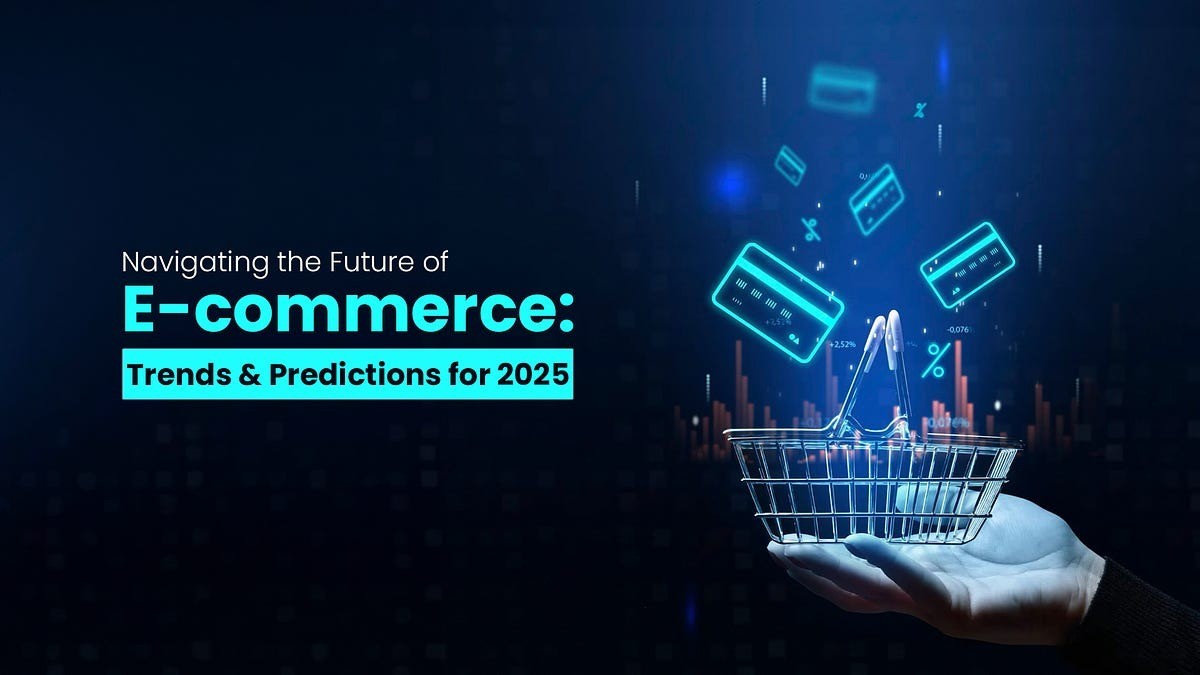The Future of eCommerce – Top Trends and Innovations in 2025
Introduction
The eCommerce landscape is evolving rapidly, driven by technological advancements, shifting consumer behaviors, and increasing competition. Businesses that adapt to emerging trends will stay ahead of the curve and maximize growth opportunities. This article explores the top eCommerce trends and innovations shaping the industry in 2025.
1. Artificial Intelligence and Machine Learning in eCommerce
Key Applications of AI and ML
- Personalized product recommendations
- Chatbots and virtual assistants
- Automated inventory management
- Fraud detection and cybersecurity
Benefits of AI in eCommerce
| Feature | Benefits |
|---|---|
| AI-Powered Chatbots | 24/7 customer support, instant responses |
| Recommendation Engines | Higher conversions, increased AOV |
| Predictive Analytics | Demand forecasting, inventory optimization |
2. Voice Commerce and Smart Assistants
Growth of Voice Shopping
- Increasing use of voice-activated devices (Alexa, Google Assistant, Siri)
- Hands-free, convenient shopping experience
- AI-driven personalized voice recommendations
Optimizing for Voice Search
- Focus on conversational keywords
- Implement voice-friendly product descriptions
- Improve mobile and app integrations
3. Augmented Reality (AR) and Virtual Reality (VR)
How AR/VR is Revolutionizing Online Shopping
- Virtual try-ons for fashion and accessories
- 3D visualization of home decor and furniture
- Enhanced customer engagement and satisfaction
Popular AR/VR Applications
| Industry | AR/VR Implementation |
| Fashion | Virtual fitting rooms |
| Home Decor | 3D room planners |
| Automotive | Virtual test drives |
4. Social Commerce and Influencer Marketing
The Rise of Social Shopping
- Integrated shopping features on Instagram, TikTok, and Facebook
- Live-stream shopping events
- Growing role of micro-influencers in driving sales
Social Commerce Best Practices
- Leverage user-generated content
- Use shoppable posts and direct checkout links
- Collaborate with niche influencers
5. Subscription-Based Business Models
Why Subscription Services Are Booming
- Predictable revenue streams
- Enhanced customer loyalty and retention
- Personalization-driven experiences
Popular Subscription Models
- Beauty and fashion subscription boxes
- Meal kit and grocery delivery services
- Software as a Service (SaaS) platforms
6. Sustainable and Ethical eCommerce Practices
Eco-Friendly Shopping Trends
- Demand for sustainable packaging
- Growth of second-hand and refurbished goods
- Carbon-neutral shipping initiatives
Green eCommerce Strategies
- Use biodegradable packaging
- Optimize supply chain sustainability
- Promote corporate social responsibility (CSR)
7. Mobile Commerce (M-Commerce) Expansion
The Importance of Mobile Optimization
- Increasing smartphone penetration
- Higher mobile conversion rates
- Need for seamless mobile payment solutions
M-Commerce Best Practices
- Optimize for mobile-first indexing
- Implement one-click checkout options
- Utilize progressive web apps (PWAs)
8. Blockchain and Cryptocurrency in eCommerce
How Blockchain Enhances Online Shopping
- Improved payment security and transparency
- Reduced fraud and chargebacks
- Faster cross-border transactions
eCommerce and Cryptocurrency Adoption
- Acceptance of Bitcoin, Ethereum, and stablecoins
- Blockchain-powered supply chain tracking
9. Buy Now, Pay Later (BNPL) and Alternative Payment Methods
Why BNPL is Gaining Popularity
- Flexible payment options attract more buyers
- Higher average order values (AOV)
- Integration with major eCommerce platforms
Other Emerging Payment Trends
- Digital wallets (Apple Pay, Google Pay)
- Biometric authentication for secure payments
- Cross-border payment solutions
10. Data Privacy, Cybersecurity, and Compliance
Importance of Data Protection in eCommerce
- Rising cyber threats and data breaches
- Stringent global privacy regulations (GDPR, CCPA)
- Need for encrypted payment processing
Cybersecurity Measures for Online Retailers
- Implement multi-factor authentication (MFA)
- Use SSL certificates for secure transactions
- Conduct regular security audits
Conclusion
The future of eCommerce is driven by innovation, customer-centric strategies, and digital transformation. By embracing emerging technologies, businesses can enhance user experiences, boost sales, and stay competitive in the evolving digital marketplace.


